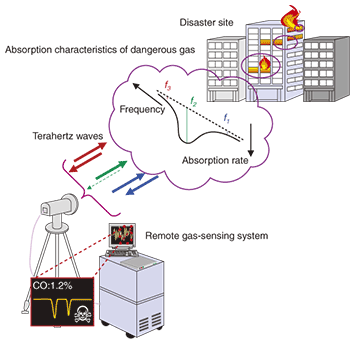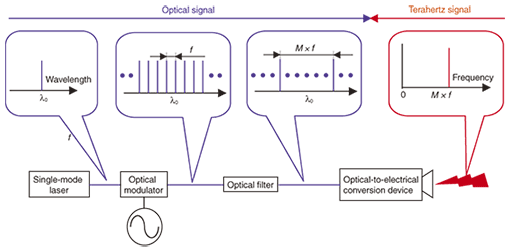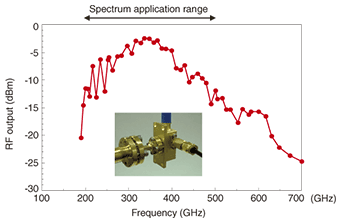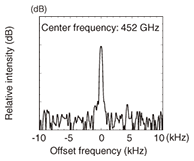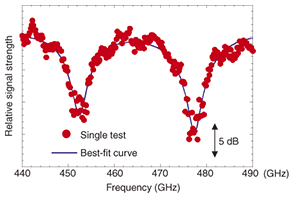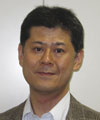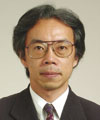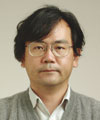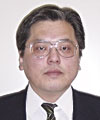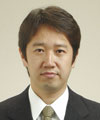 |
|||||||||||||||||||||
|
|
|||||||||||||||||||||
|
Special Feature: Applied Technology for Millimeter and Terahertz Electromagnetic Waves Vol. 7, No. 3, pp. 40–45, Mar. 2009. https://doi.org/10.53829/ntr200903sf7 Gas Detection Using Terahertz WavesAbstractWe are utilizing the characteristics of terahertz electromagnetic waves to develop a system for remotely detecting whether dangerous gases are present at locations such as disaster sites. In this article, we give an overview of our system, which is based on technology for generating narrow-linewidth variable-frequency terahertz waves derived from optical techniques. We also present results of gas absorption spectra experiments performed using this technology.
1. IntroductionTerahertz electromagnetic waves have several characteristic features: (1) their frequency is an order of magnitude higher (shorter wavelength) than electromagnetic waves in the microwave- and millimeter-wave bands, so their energy can be focused onto a small spot relatively easily, (2) they are longer in wavelength than infrared and visible light, so they are scattered less by dust, soot, and smoke in the air, and have little effect on the human body, and (3) their absorption by many materials produces characteristic absorption spectra, or spectral fingerprints. It should be possible to use these properties of terahertz waves to detect sources of dangerous gases, such as carbon monoxide, hydrogen cyanide, or hydrogen chloride, from a distance at disaster sites such as large-scale earthquakes. Rapid distribution of this information could help in rescuing victims and preventing secondary disasters, helping to minimizing disaster damage. Under a contract from the National Institute of Information and Communications Technology (NICT), we are conducting research [1] based on this concept for their five-year plan that started in 2006 entitled “Research and development on terahertz wave technology for providing safety and security through information and communication technology (ICT)”, which is part of their Terahertz Project [2]. In the following sections, we outline the remote terahertz-spectrum sensing system under development in this project. We then describe a particular focus of our research—a narrow-linewidth variable-frequency terahertz-wave generator based on optical technology—and its importance to this research. Finally, we present the results of some experiments done using the terahertz-wave generator to verify the principle of remote spectral sensing described above. 2. System architectureBoth passive and active methods are available for detecting dangerous gases in disaster areas by terahertz spectroscopy. A passive method identifies the electromagnetic spectra emitted by relevant dangerous gas molecules. An active method illuminates the area with terahertz waves from a distance and analyzes the spectrum scattered or reflected from the site. In a disaster area, various high-temperature objects are present in the background of the hazardous gases to be observed, so, in these cases, the active method is expected to provide higher sensitivity than the passive method. A specific example of the operating principles of such an active remote sensing system is illustrated in Fig. 1. Terahertz waves emitted by the transmitter in the range f1 to f3 are reflected by the walls and received by the receiver. If a gas with an absorption frequency near f2 is present between the transmitter and the wall, the received signal level at that frequency will be lower than those at other frequencies. Thus, gases present near the target can be detected by illuminating the target with a range of terahertz frequencies covering the absorption spectra of the gases to be detected and observing the reflected spectrum. For this task, we selected a range of 0.2 to 1 THz for the system, taking into consideration aspects such as propagation losses in the atmosphere [3] and spectral properties of gas molecules in the terahertz band [4].
Various methods for generating a signal sweeping through this band of terahertz waves were considered, including using (1) the optical interaction effects of nonlinear optical crystals, (2) a free-electron laser, which oscillates an electron beam with a periodic magnetic field, (3) a carbon-dioxide gas excitation laser oscillating in the terahertz band, (4) a solid-state oscillator, such as a Gunn diode, outputting a millimeter-wave signal and raising it to the terahertz range using frequency multipliers, (5) a backward-wave oscillator in the terahertz band, (6) a quantum cascade or p-Ge laser oscillating in the terahertz band, and (7) photomixing methods that use a semiconductor device for optical-to-electrical conversion of an optical beat signal. Of these methods, (1)–(3) require large-scale equipment, which is impractical for the environments under consideration in this project; methods (4) and (5) can use relatively compact equipment, but they cannot sweep through an adequate range of frequencies; and method (6) is still in the research and development stage and has not produced terahertz-order oscillations. Thus, method (7), photomixing, seems to be the best suited to producing terahertz waves in the 0.2–1-THz range, according to the objectives of this research. 3. Terahertz wave generation using optical technologyA schematic diagram of the principles used to generate a terahertz signal using an optical beat signal is shown in Fig. 2. The optical signal from the single-mode laser is first converted to a multimode signal by modulation. Two different wavelengths are then extracted using an optical filter. An optical-to-electrical converter such as a high-speed photodiode can then be used to generate a terahertz wave at a frequency equal to the difference between these two frequencies.
The light sources, optical fiber, and optical amplifiers used in optic-fiber communication systems have frequency bandwidth of several tenths of a terahertz. Thus, by using wavelength selection/frequency control technology in the optical domain, the frequency of terahertz waves can be controlled accurately over a wide range of frequencies. Using a uni-travelling-carrier diode (UTC-PD) [5], [6] developed by NTT as an optical-to-electrical converter, it is possible to implement a high-output, wideband terahertz-wave generation device. In this case, the UTC-PD module must have a high output power in the terahertz frequency range. From a practical perspective, we used a butterfly package, waveguide output configuration, and over-mode operation. To achieve over-mode operation in a waveguide output structure, it is important to suppress the generation of higher-order modes. To do so, we optimized the module structure using three-dimensional electromagnetic analysis, suppressing the generation of higher-order modes in the 200–500-GHz band. The frequency characteristics of a prototype sub-terahertz UTC-PD module are shown in Fig. 3. This module, which covers the operating frequency range from 200 to 500 GHz, shows maximum output power of 500 µW at 350 GHz. The spectrum of a 452-GHz signal generated using the optical technique [7] is shown in Fig. 4. From the figure, we estimate its bandwidth to be less than 400 Hz.
For an active remote gas-sensing system, which is our final objective, the terahertz waves must be transmitted through space. For this purpose, it is easier to implement a low-noise receiver if the energy of the terahertz waves used for sensing is concentrated in as narrow a frequency range as possible because a narrow-bandwidth receiver can then be used. Producing a very narrow-linewidth signal is also very important in terms of accurately identifying gas types and their concentration from the terahertz absorption spectrum. For these reasons, the variable, narrow-linewidth terahertz-wave generator based on optical beat signals described here is essential technology for implementing the remote spectral sensing system. 4. Measurement of gas absorption spectraTo clarify whether our terahertz-wave generator is applicable to gas spectroscopy, we performed experiments to measure the absorption spectrum of nitrous oxide (N2O), as a representative toxic gas. A block diagram of the test system is shown in Fig. 5. The signal output from the terahertz-wave generator is collimated into a parallel beam by an off-axis parabolic mirror and directed at the wall. Part of the beam is redirected by a beam splitter and directed at a power monitor. The returning signal, having reflected off the wall, is redirected by a half-mirror and focused on the receiver by another off-axis parabolic mirror. A Schottky barrier diode detector is used in the receiver. This configuration allows the transmitted and received beams to follow the same path. The signal is reflected by the wall, which is the simulated target in experiments. For our experiments, the transmitter was placed either 1.3 or 3.6 m from the wall, the N2O gas was diluted with N2 (total pressure: 1 atm), and the gas cell was 1 m in length. The material used for the wall was either a fully reflecting mirror or one of the outer walls commonly used for Japanese houses. It was made of a metal and formed-resin base composite.
Figure 6 shows the spectrum of the received signal obtained using a gas cell with a 64% concentration of N2O when the system was placed 1.3 m from the wall, which was an outer wall commonly used for Japanese houses. The peaks seen at 452 and 478 GHz are absorption due to the N2O. The solid line is a least-squares fit of the experimental values. The spectral peak frequencies, peak intensities, and absorption-line width from this line agree very well with computed values from Hitran [8].
Similar experiments were done at the longer distance of 3.6 m and lower N2O concentration of 25%, but in both cases, the position and intensity of the peaks and the absorption-line width matched the computed values very closely. These results show experimentally that it is possible to detect gases remotely using active terahertz-wave sensing. 5. Future workWe hope to use the narrow-linewidth variable-frequency terahertz-wave generator based on optical beat signals introduced here to drive a superconductive tunneling mixer [9] for use as a local-oscillator signal source. This will enable us to create a broadband, high-sensitivity receiver covering the terahertz waveband. We will continue to work to complete this ultrahigh-sensitivity wideband terahertz receiver technology suitable for terahertz remote gas sensing. References
|
|||||||||||||||||||||








